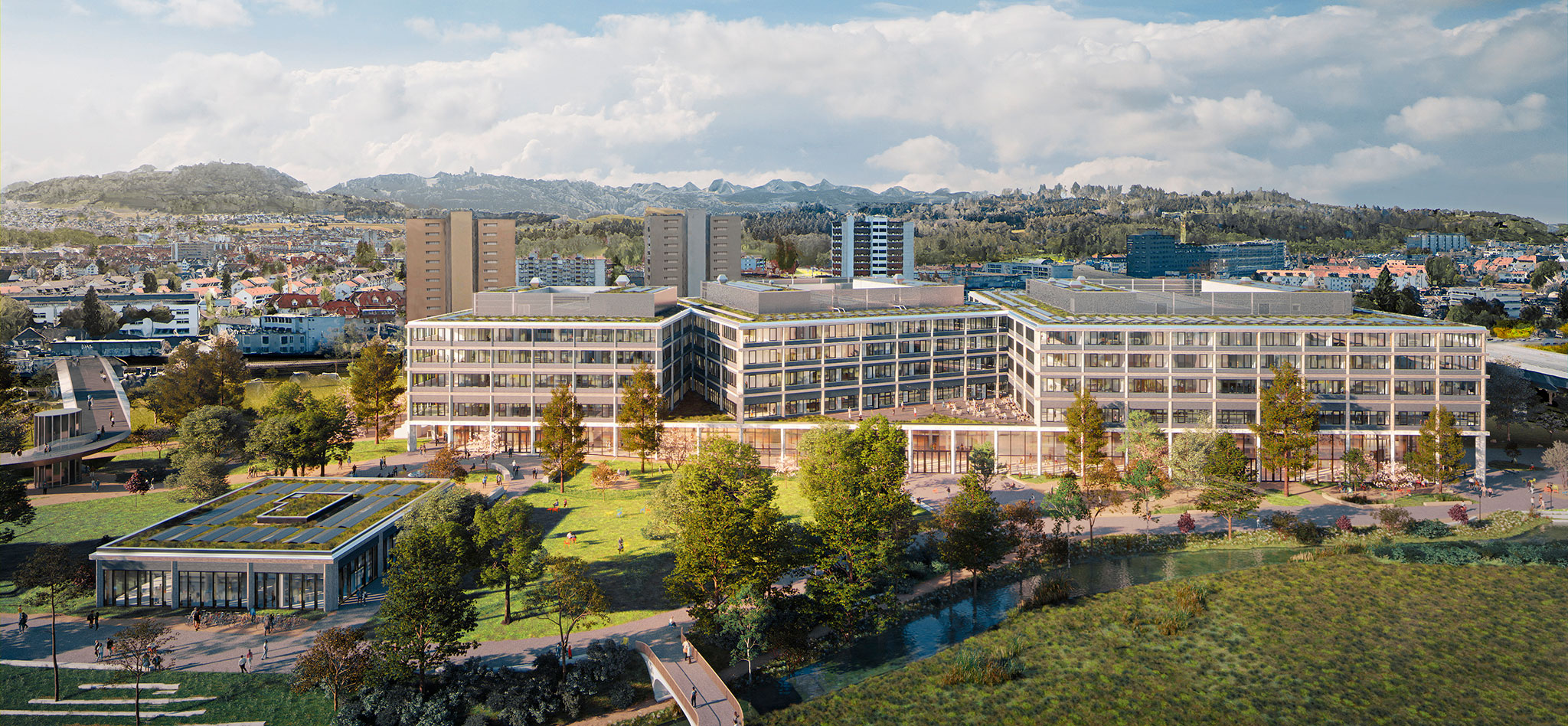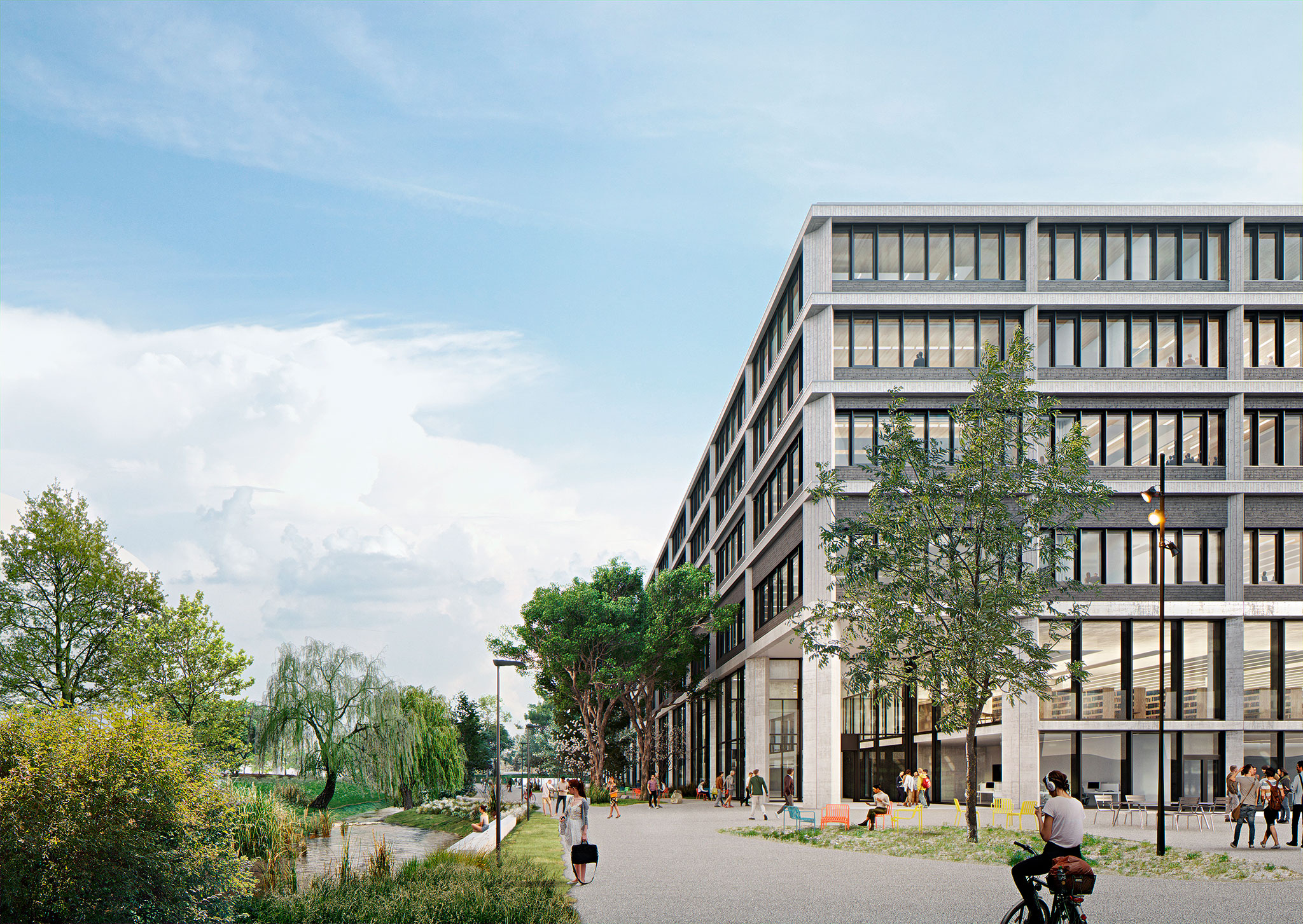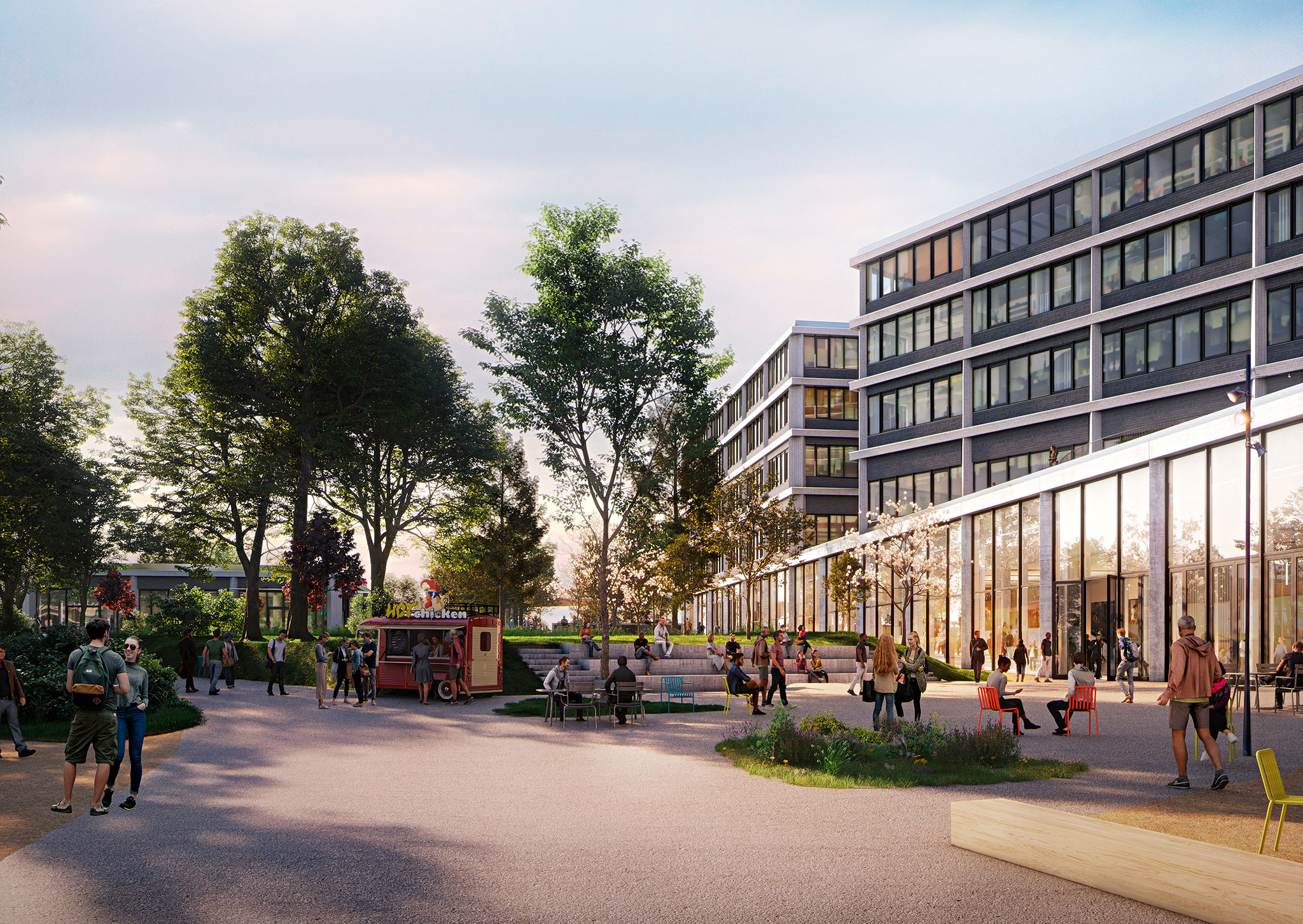The buildings are connected on the north side by an outdoor space, with public access, and with a stream open to the city. The materiality of the facades corresponds to the overall structural concept: they consist of prefabricated concrete elements in the plinth and wooden elements on the upper floors.

Display. New Campus University of Bern by wulf architekten and STUDIOPEZ.
Project description by STUDIOPEZ and wulf architekten
Background
The constant growth of the Bern University of Applied Sciences (BFH) means that the various departments are currently spread across 26 different locations in Bern, Biel, Burgdorf, Magglingen and Zollikofen. This makes cooperation in teaching difficult and implies duplication and high rental costs, as well as lack of space. Many of the buildings currently occupied are aging. In 1997, 12 universities joined together to form the Bern University of Applied Sciences “BFH”.
In 2016, the Canton of Bern decided to concentrate the departments of Health (G), Social Work (S) and Economics (W), as well as the department of Performing Arts of the HKB (University of the Arts) on a single campus in the Weyermannshaus Ost area in Bern. In 2018, the “Dreierlei” project, designed by the design team wulf architekten gmbh from Stuttgart and STUDIOPEZ from Basel, won the open, international competition of the Canton of Bern. The project combines independent departmental buildings with a common “base” building and a large outdoor space.

Display. New Campus University of Bern by wulf architekten and STUDIOPEZ.
Concept
The challenge of this project was to generate a new dynamic space that maintained the spirit of a campus, consolidating the different faculties under one roof.
This objective is achieved through a pedestrian street that runs through the campus as a public spine that connects the city with a park.
The buildings are connected on the north side through a carefully planned outdoor space with public access, and with a stream open to the city, thus joining the campus.
A network of traffic-free trails, play areas, greenery, various outdoor spaces and seating areas invite visitors to stroll and be entertained. The building is designed with a hybrid concrete and wood structure and is equipped with an energy façade activated by photovoltaic panels.

Display. New Campus University of Bern by wulf architekten and STUDIOPEZ.
Proposal
The construction is conceived as a set of three volumes in cubes, which form a stepped building both in plan and in section. In this way, STUDIOPEZ responds with a simple architectural gesture to all the complexities of the project: the geometry of the site, the principles of the master plan, both in terms of volume and height and the relationship with neighboring buildings, the programmatic requirements and the environments. next.
The interconnection of the cubes and the clear structure of the floor plan allow maximum flexibility in use. Parallel to the campus park runs an interior access road, the so-called "interior street", which, as the main pedestrian artery of the university, links all the units together and leads to the vertical connection lobbies of the buildings.
The materiality of the facades corresponds to the overall structural concept: they consist of prefabricated concrete elements in the plinth and wooden elements on the upper floors.
The staggered height of the building reflects one of the guiding ideas of the master plan: «The building masses should be condensed towards the center of the site. Towards the edges of the site, the volumes of the buildings must transmit a mediating effect with the environment and the adjacent buildings. Adapting to the slope of the building's surroundings, the central cube twists, expressing the independence of its use as a high school of music and theater. This creates a playful appearance despite the compactness of the overall structure. In addition, it contributes to reinforcing the concept of "kneaded volume" found in several plots on campus.







































